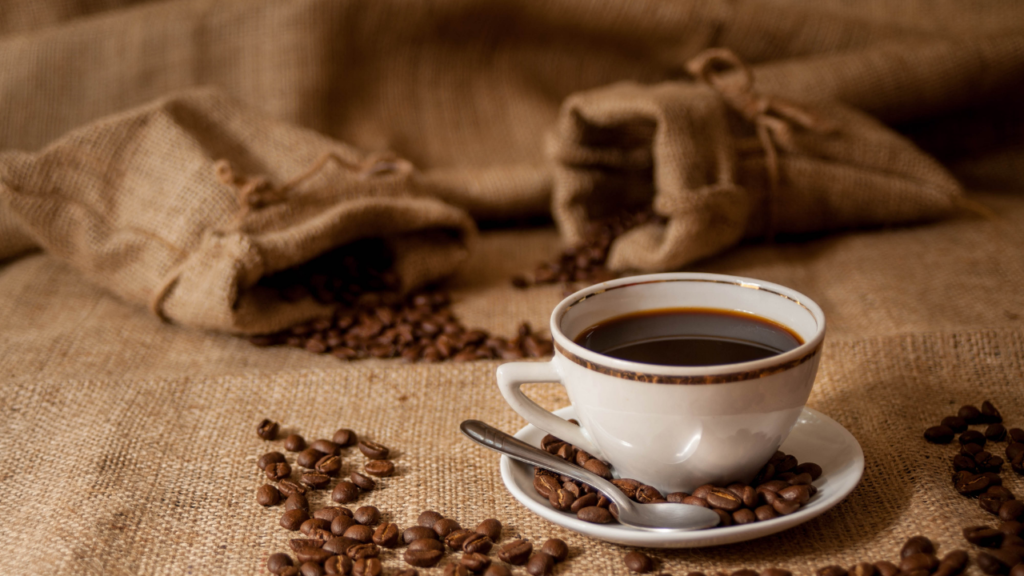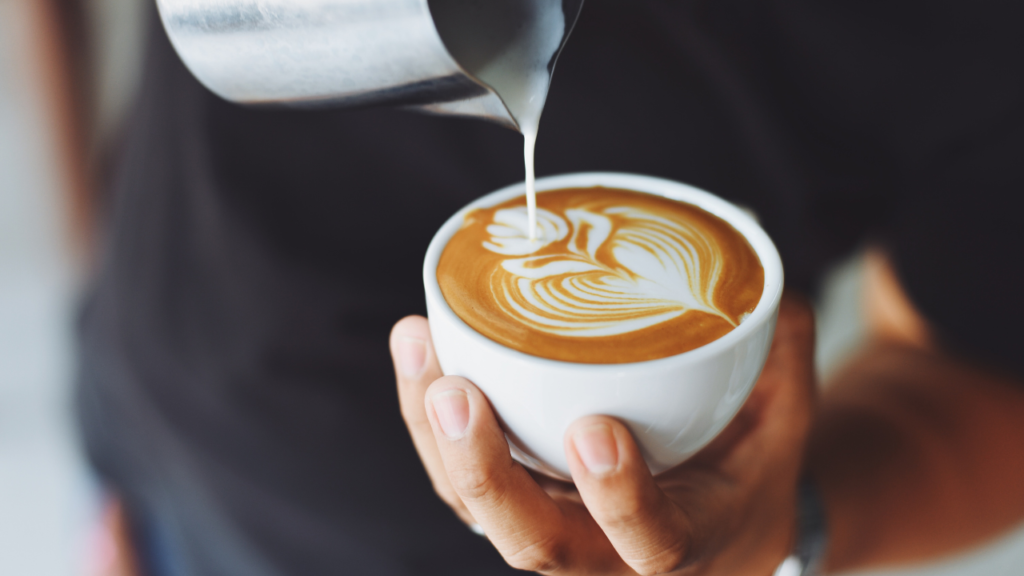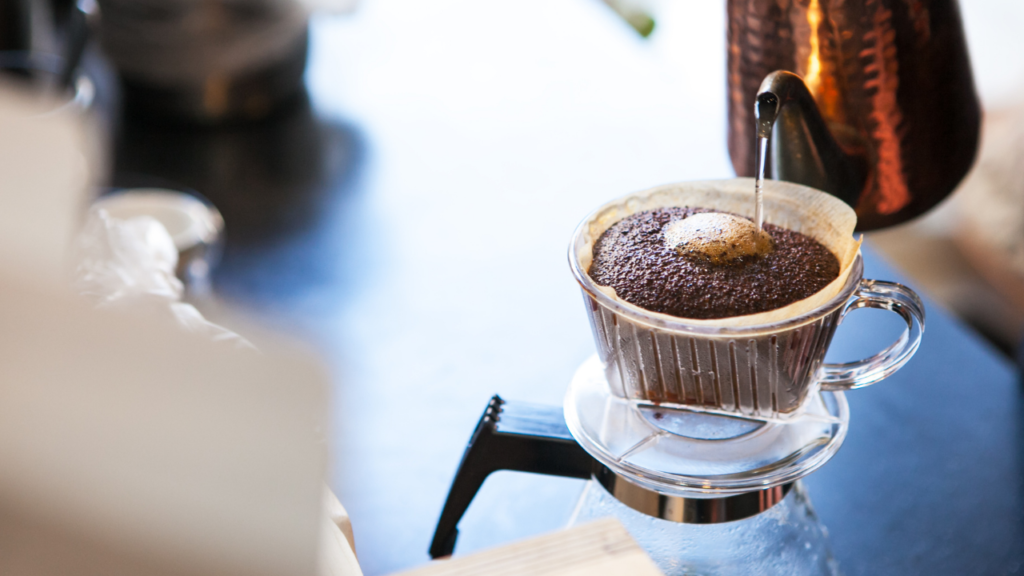Grinding And Brewing
Grinding And Brewing
Here are some important tips and guidelines to follow for grinding and brewing our freshly roasted coffee beans.
Grinding
Grinding is one of the most important steps in preparing a perfect cup of coffee.
There are only three styles of grinding that are used today.
- Steel burr grinder- Two metal plates with blades cut into them are rotated by electric motor while compressing the coffee beans between them. This crushes the bean while producing a uniform and consistent grind.
- Roller mill grinder- This style of grinder is used almost exclusively by large commercial coffee producers because of the size and cost of the equipment. This method is on par with good burr style grinders.
- Electric “blade” grinder- This is a low-cost way of grinding coffee. It has a few draw backs such as inconsistent grinds which affects the extraction of the coffee. It also tends to heat the coffee up during the grinding which is not preferable.
The bottom line when it comes to grinding coffee is that you want to use a burr style unit and to only grind what you will need. Remember that coffee starts to deteriorate as soon as it is ground. Also note that it is important to keep your grinder clean as the oils in coffee, which are left after grinding, will become rancid after time and will affect the taste of the coffee going through the grinder.

As we move towards brewing the coffee we must know how important it is to get the right grind for the type of brew method we are using. Coffee that is ground too fine will always produce a bitter taste regardless of the method being used. Conversely, coffee that is ground too coarse will lack body and will taste watery because of improper extraction. It is important to note that, in general, regardless of method, one must try and get the grind as fine as possible without producing bitterness. This is important because the finer the grind the more contact there is between the coffee and the hot water, which results in more essential oils being released. Of course if the grind is too fine then harsher, less soluble chemicals are released resulting in a bitter cup of coffee.

Brewing Methods
The first thing to identify is the brewing method you wish to use. This will determine your grind.
- Turkish style- This is the finest grind possible and it is only attained by using a burr or rolling style grinder. A blade grinder will not produce a fine enough grind.
- Espresso style- Coffee ground at this level typically has the feel of salt granules without being too powdery. Because there are different levels of water pressure relative to the different espresso machines, most espresso grinds have to be customized for the particular machine being used. A general rule of thumb is that a steam driven/stove-top unit will require a slightly coarser grind than a pump driven machine.
- Drip style- This is the most common method used in North America. The grind is coarser than espresso. It is close to the size of brown sugar granules and it should not have any grounds that are powder like. There is a range of grind when it comes to drip brewers. It ranges from drip-fine grind to drip-coarse grind. This depends on whether the brewer is pour-over, by hand, or spray nozzle, which is typically called automatic-drip. The pour-over style is usually a finer grind than the auto method. It the drip brewer is a larger one then the grind will usually be at the coarse-drip level.
- French press/bodum/perculator style- This grind is usually the coarsest of all. Using any of these methods requires the coffee to be coarse because the water has to move through the coffee without pressure being created. For example, when you use a French press and the coffee is ground too fine then you will not be able to depress the plunger. On a peculator, the water will not circulate through the coffee if it is ground to fine.

Weighing And Brewing
Coffee weight is critical when it comes to making the perfect cup of coffee. There are industry standards that most people follow but there is also a degree of flexibility when it comes down to it and it is reflective of personal taste.
In general, a normal rule of thumb is 2-3 tablespoons (7-8 grams) of coffee per 6-8 oz’s of water. This applies to the Turkish and drip methods. If you like your coffee on the strong side then you would use a more generous amount of ground coffee. The same weights apply to espresso, which are 7-8 grams for a single shot and 12-14 grams for the double shot. When it comes to the French press/perc style then you use slightly more coffee because of the coarseness of the grind. Typically, you increase your amount by 1-2 grams per 6-8 oz. of water.
Another important factor in the brewing process is the water being used. If you can’t drink the water you cannot make a good cup of coffee. Water should be filtered and not softened. Soft water has the minerals taken out which negatively effects the coffee. On the other side of the spectrum, hard water will mute some of the natural acids in coffee, producing a bland cup of coffee. A general rule is great tasting water produces great tasting coffee.
The last important factor is the extraction time. This is the amount of time that the water is in contact with the coffee. It is particularly important when it comes to the espresso, drip and French press methods. With espresso you want an extraction time of 15-20 seconds. Any longer and more of undesirable chemicals, i.e., tanic acid, start to get extracted. With the French press method let your coffee seep for four minutes. Any longer and the unwanted tastes will appear. With the drip or pour-over process the ideal extraction time is 3-5 minutes.
